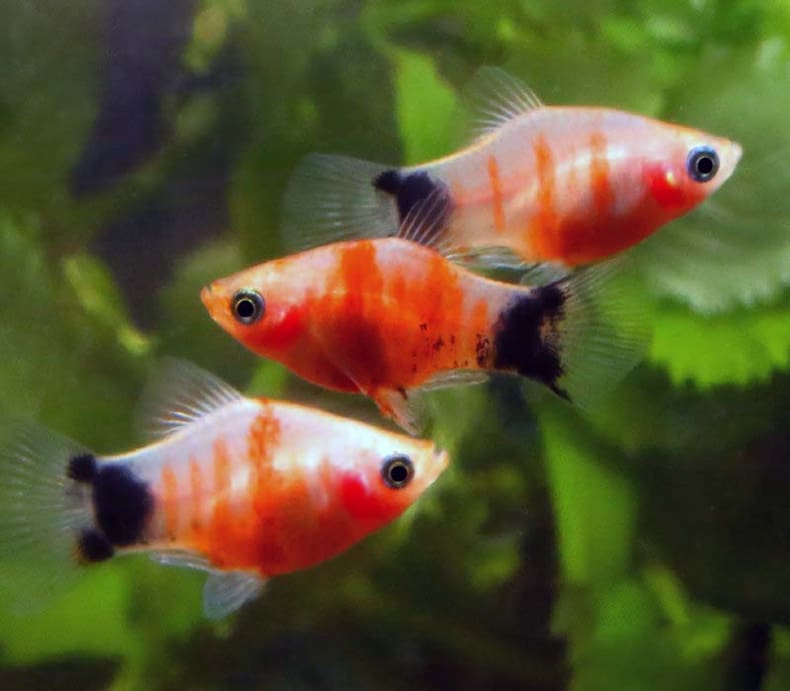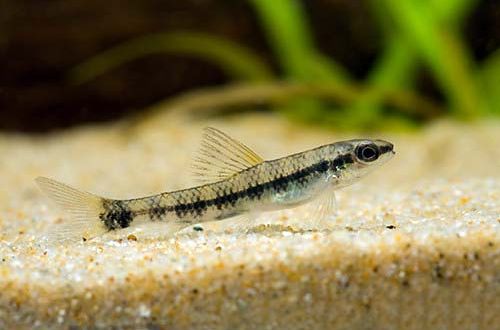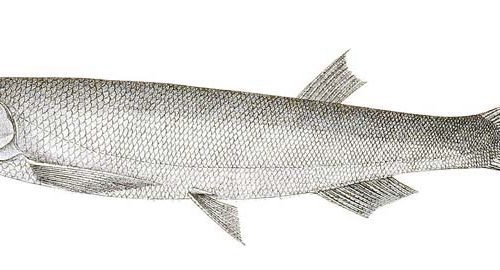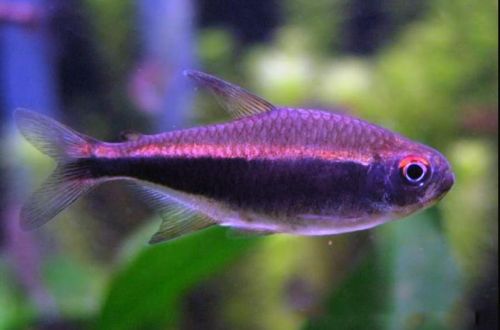
Pecilia “Mickey Mouse”
Pecilia “Mickey Mouse”, the English trade name of Platy Mickey Mouse. It does not occur in nature, it is a breeding variety of the common Pecilia (Xiphophorus maculatus). The fish got its name because of the characteristic pattern on the base of the tail of one large and two small black dots, reminiscent of the symbol of the cartoon character Mickey Mouse. Body color can be very diverse from golden, orange and red to blue and green.

Brief information:
- The volume of the aquarium – from 60 liters.
- Temperature – 20-28°C
- Value pH — 7.0–8.2
- Water hardness – medium to high hardness (10-30 GH)
- Substrate type – any
- Lighting – moderate or bright
- Brackish water – acceptable at a concentration of 5-10 grams per liter of water
- Water movement – light or moderate
- The size of the fish is 5–7 cm.
- Food – any food
- Temperament – peaceful
- Content alone, in pairs or in a group
Maintenance and care, arrangement of the aquarium
An easy to keep hardy fish. It will be a good choice for the beginner aquarist. Pecilia “Mickey Mouse” is able to live in various conditions, including in small aquariums. The optimal tank volume for 3-4 adults starts from 50-60 liters. In the design it is recommended to use a large number of aquatic plants. In home amateur aquariums, algae are usually formed on the leaves in one quantity or another, which will become an additional source of food for these fish.
Comfortable water composition has elevated pH and GH values. Permissible content in a brackish environment. Like any other fish, Pecilia needs clean water. Regular maintenance of the aquarium and the smooth operation of the filtration system will keep the water quality at a high level and prevent the accumulation of organic waste.
Food. The basis of the diet can be dry food. An important condition is that the composition must contain plant components. You can supplement your daily diet with live or frozen foods such as daphnia, bloodworms, brine shrimp, mosquito larvae, etc.
behavior and compatibility. They are distinguished by a peaceful disposition, friendly towards other species. All viviparous fish are suitable as neighbors, as well as those who can live in a slightly alkaline environment. In order to reduce competition within the species, it is desirable to maintain such a composition of the group, where there will be two or more females per male.
Breeding / reproduction. Sexual maturity is reached by four months. Females give birth to fully formed fry. In addition, they have the ability to store the seed of males for a long time and thereby give offspring, only when there are suitable conditions. Thus, spawning can occur even in the absence of males. The incubation period lasts about 30-40 days. One brood contains dozens of fry. To avoid predation by adult fish, juveniles are separated from their parents to avoid predation.





